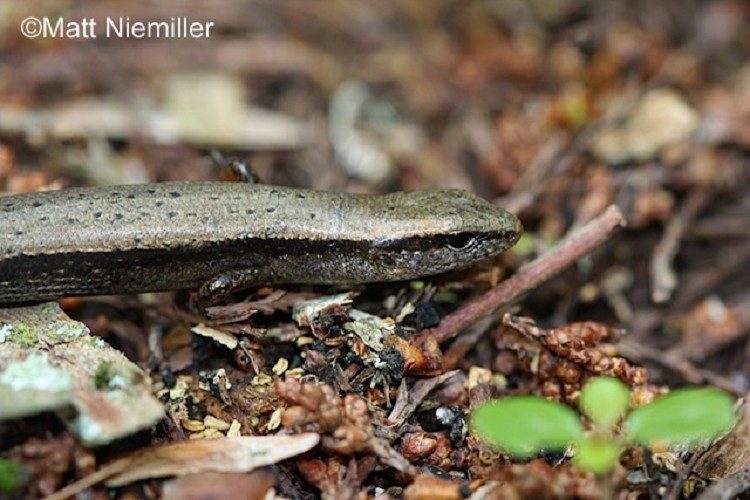Little Brown Skink, Scincella lateralis
The Little Brown Skink, also known as Ground Skink or “brown-backed skink.” Found across the state, except the extreme northeastern corner.
Description: A small, slender lizard (3.0 to 5.25 inches in length) with smooth, shiny scales and short legs. Background color is variable, but usually golden brown to dark brown with dark stripes running down the side of the back from eye to mid-tail. Small black specks typically dot the back and sides. Adult males have yellow bellies; adult females have white or gray bellies and are larger. Juveniles are similar to adults.
Similar Species: All other skinks in TN (Coal, Common Five-lined, Southeastern Five-lined, and Broad-headed) have light stripes along sides or back.
Habitat: Prefers woodlands with plenty of cover such as leaf litter, loose soil, decaying wood, pine needles, logs, or other debris.
Diet: A variety of small insects, spiders, and worms.
Breeding information: Adults mate in late winter or spring. Females lay between 2-7 eggs per clutch in rotten logs, stumps, or under leaf litter during the spring and summer. Embryos are more developed in the egg when they are laid, shortening the incubation time to only about 3 weeks. Females do not guard the nest.
Status in Tennessee: Appears to be common throughout TN forests.
Fun Facts:
- The Little Brown Skink has a clear scale on the lower eyelid allowing it to see when the eyes are closed.
- Rarely climbs trees.
Best places to see in Tennessee: Pine or mixed pine-hardwood forests with plenty of leaves or pine needles.
